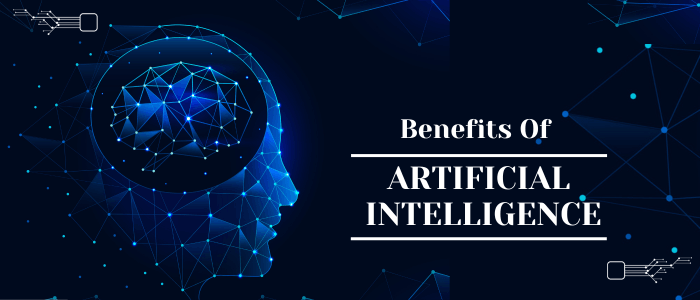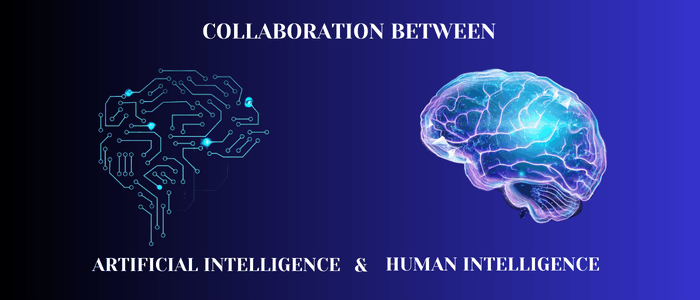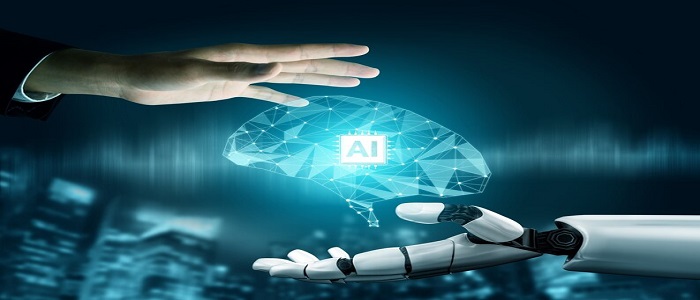We are diving into a captivating journey through the realms of Artificial Intelligence (AI) and its enthralling tango with the esteemed human intelligence. Picture this: a face-off between the Terminator and Albert Einstein, sans the pyrotechnics but brimming with cerebral sparks. In the following pages, we embark on a voyage to unravel the parallels, disparities, merits, and intricate ethical conundrums encompassing the world of AI and human intelligence.
Let’s kick things off with a grand entrance, shall we? Our grand theme for today is the ultimate AI vs. human intelligence showdown. We’re peeling back the layers of this technological onion to reveal both the overlaps and gaps between AI and human intelligence. It’s like comparing apples and robot apples, but way more intriguing.
Now, why should you care about this epic clash of bits of intelligence? Well, my friends, in the age of technological marvels, understanding these distinctions is like having a secret decoder ring in a digital world. It helps us grasp the limits of AI, avoid unrealistic expectations, and make informed decisions about where to deploy this tech wizardry.
Defining Artificial Intelligence and Human Intelligence
First things first, let’s get our definitions straight. AI, or Artificial Intelligence, is a brainy software or hardware that can mimic human-like tasks. It’s like your computer’s cool cousin who can do math, learn new tricks, and even play chess with you.
Human intelligence, on the other hand, is that beautiful, complex masterpiece in your head. It’s the thing that lets you solve puzzles, learn from experience, and decide that pineapple doesn’t belong on pizza (unless you’re into that sort of thing).
AI has come a long way in mimicking our gray matter. It can crunch numbers, translate languages, and even recognize your face in a sea of selfies. It’s like a chameleon, adapting to different tasks and environments faster than you can say, “Siri, play my ’80s playlist.”
Now, here’s where humans pull ahead like a gazelle in a race against a tortoise. Our intelligence is a magnificent beast that not only solves problems but creates them (hello, existential crisis). We’re adaptable, emotional, and capable of complex decision-making that makes AI’s circuits spin in envy.
The Benefits of Artificial Intelligence

Speed and Accuracy
Picture this: AI doesn’t do coffee breaks; it’s the perpetual espresso shot of the tech world. It’s so fast that it can calculate the meaning of life, the universe, and everything before you finish saying “artificial intelligence.” It’s the Usain Bolt of the digital realm, sprinting through calculations like a cheetah chasing its morning coffee, and it never ever misses a decimal point. Decimal points tremble in its presence.
Scalability
AI doesn’t break a digital sweat, even when faced with a dataset the size of Mount Everest. It’s like having a librarian who can organize an entire library faster than you can blink. Picture this librarian with superhuman speed, deftly cataloging books with a flourish and precision that puts your meticulously organized sock drawer to shame. If AI were in charge, the Library of Congress would fit in your pocket.
Consistency
Ever wish your computer had mood swings? No? Well, you’re in luck because AI doesn’t have good days or bad days. It’s like having a robot butler who serves your morning tea with the same polite efficiency every single day. Whether it’s a Monday morning or a Friday evening, AI will follow instructions to the letter without ever rolling its digital eyes or questioning your choices. It’s the ultimate in robotic reliability.
Efficiency
Now, here’s where AI goes from impressive to mind-boggling. It’s the multitasking champion, the digital octopus of efficiency. Imagine a chef who not only cooks a 20-course meal flawlessly but also solves a Rubik’s Cube with one hand and juggles flaming torches with the other. That’s AI in a nutshell. It can handle a million tasks simultaneously without breaking a sweat, all while maintaining a level of focus that would make your goldfish jealous. It’s like having a personal assistant, a superhero sidekick, and a master multitasker all rolled into one impeccably coded package.
The Depth of Human Intelligence
Creativity
Imagine if AI tried its hand at art. It would probably create a masterpiece that’s as exciting as a bowl of plain oatmeal. You see, humans have this magical thing called creativity. It’s the reason why we have Mona Lisas instead of “Mona Laptop Screensavers.” AI can mimic creativity, but it can’t quite capture the genius of Picasso or the rock ‘n’ roll brilliance of “Bohemian Rhapsody.” So, while AI is busy drawing straight lines, we’re here crafting abstract art that makes people scratch their heads and say, “Is that a statement on the impermanence of digital existence?”
Emotion and Empathy – The Heart-to-Heart Humans
Have you ever tried pouring your heart out to a robot? Trust us; it’s like talking to a brick wall but less responsive. Humans, on the other hand, are emotional superheroes. We understand feelings, we’ve mastered the art of empathy, and we can provide genuine emotional support. When was the last time a robot gave you a shoulder to cry on? Probably never! So, while AI is stuck in a world of ones and zeros, we’re out here making connections, sharing stories, and occasionally shedding a tear during heartwarming movie scenes (no judgment if it’s an animated film).
Common Sense
AI is brilliant, no doubt about it, but it’s about as sharp as a rubber spoon when it comes to common sense. It’s like that one friend who always takes things literally, even when you’re clearly joking. Humans, on the other hand, are common sense gurus. We’re the folks who can tell you not to wear a snorkel in the shower because, well, water and snorkels aren’t the best of friends. We also know that ice cream during a snowstorm is a recipe for a chilly disaster (unless you’re into that sort of brain-freeze challenge). While AI is busy calculating complex algorithms, we’re mastering the art of knowing that you don’t bring a beach umbrella to a snowball fight.
Adaptability
Humans are like the Swiss Army knives of adaptability. We can switch gears faster than a race car with a turbo boost. We thrive in ever-changing environments, we learn new skills like it’s nobody’s business, and we evolve as circumstances dictate. AI, well, not so much. It’s a bit like watching a robot trying to do the cha-cha when it’s programmed for calculus. While AI is scratching its head, wondering why it can’t dance gracefully, we’re out here switching from work mode to weekend mode in the blink of an eye. Who needs a calculator when you’ve got a human brain that can calculate tips, solve Sudoku puzzles, and remember the lyrics to “Baby Shark” all at once?
Ethical and Moral Dimensions
A. Ethical Considerations
AI, like a digital detective, can sometimes be biased or make questionable decisions. It’s like hiring a personal chef who only cooks their favorite dish, no matter your dietary restrictions. We need to keep an eye on AI to ensure it plays fair and square.
B. Moral Implications
Imagine entrusting critical decisions to a robot surgeon or an autonomous car. It’s like letting your dog choose your dinner menu – it might not end well. We need to ponder the morality of delegating life-altering choices to AI, especially in fields like healthcare and transportation.
C. Human Values and Ethics
Remember, AI is our creation, like Frankenstein’s monster, but with more circuits and fewer bolts. We have the power to shape its values and ethics, ensuring it aligns with our vision of a better world. It’s like being the parent of a very intelligent, slightly unpredictable child.
AI’s Learning Process vs. Human Learning
Time to talk about the learning curve:
AI learns from data and patterns, making it a fast learner, like a teenager who masters a new video game in minutes. But it’s data-dependent, which means it can’t learn much from limited data or experience emotions like excitement or frustration.
Human learning, on the other hand, is a marvel. We can learn from just a few examples, adapt to new situations, and experience a wide range of emotions that influence our learning process. Imagine AI trying to learn to ride a bicycle – it’s like watching a robot trying to tap dance on roller skates.
Collaboration Between AI and Human Intelligence

Now, here’s where the magic happens – collaboration!
AI and human intelligence aren’t locked in a cage match; they’re more like dance partners in a never-ending tango. AI can crunch numbers, process data, and offer insights, while humans bring creativity, empathy, and ethical judgment to the table. It’s like Batman and Robin, a dynamic duo that tackles challenges together, each bringing their unique strengths to the crime-fighting party.
Challenges and Future Prospects
As we hurtle into the future, there are challenges and exciting prospects ahead:
A. Challenges
AI Ethics: Ensuring AI remains ethical is like teaching a robot to have a moral compass. We want AI to be as virtuous as your grandma’s homemade apple pie, but that’s no piece of cake. Imagine AI making decisions about loans, job applications, or even medical diagnoses – it needs to play fair and square. We’re talking about preventing bias, discrimination, and unfairness that might creep into AI algorithms. It’s like being the referee in a soccer match, making sure all the players follow the rules, even if some of them are just lines of code.
The Job Market Tango: The job market, where humans have been the undisputed champions for centuries. But now, AI is waltzing in, taking on more tasks than a multitasking octopus. It’s like having a new intern who can finish work at the speed of light and doesn’t need coffee breaks. So, how do we, mere mortals, navigate this brave new world? It’s like preparing for a dance-off with a robot; we need to up our game, focus on skills that AI can’t replicate (hello, emotional intelligence), and learn a few new moves in the process.
Privacy Predicament: Privacy concerns in the age of AI are like trying to keep secrets at a family reunion – challenging, to say the least. AI is gobbling up vast amounts of personal data like a kid in a candy store. It knows what you ate for breakfast, your Netflix watchlist, and probably your childhood pet’s name. But with great data comes great responsibility. We need to make sure AI doesn’t turn into a digital stalker, using our personal information for who knows what. It’s like having a nosy neighbor who’s always peering through your curtains, except this one can analyze your shopping habits and tell you what brand of toothpaste you prefer.
B. Future Prospects
AI Advancements: The future of AI is like a sci-fi movie on steroids. We’re talking about AI advancements that could revolutionize industries faster than you can say, “Beam me up, Scotty!” Imagine AI in healthcare making diagnoses with the accuracy of Dr. House and the bedside manner of Patch Adams. Or AI in transportation, turning your daily commute into a futuristic joyride where traffic jams are a thing of the past. It’s like having a crystal ball that shows us a world where AI is our trusty sidekick, making life easier, safer, and more entertaining.
Human-AI Collaboration: Collaboration between AI and human intelligence is like the ultimate buddy cop movie, with humans playing the street-smart detective and AI as the tech-savvy partner. Together, we can solve crimes (or problems) faster, make better decisions, and create innovations that even Tony Stark would envy. Imagine AI helping doctors perform surgeries with the precision of a laser scalpel, or AI-powered creativity inspiring artists and musicians to push the boundaries of their crafts. It’s a world where we’re not replaced by robots but amplified by them, like having a jetpack for our brainpower.
Tackling Global Challenges: AI has the potential to be our trusty sidekick in the fight against some of humanity’s most pressing challenges. Whether it’s climate change, healthcare disparities, or resource management, AI can analyze data and provide insights that humans might miss. It’s like having a team of brilliant advisors whispering in our ears, guiding us toward better decisions and solutions. So, in the future, when we face these colossal challenges, we won’t be alone; we’ll have AI by our side, helping us steer the ship through turbulent waters.
As we step out of the ring of AI vs. human intelligence, let’s remember that this isn’t a winner-takes-all contest. Instead, it’s a partnership, a journey of exploration and discovery. AI and human intelligence each have their strengths, weaknesses, and unique contributions to make in our ever-evolving world.
Understanding these distinctions is not just about pitting one against the other; it’s about harnessing their combined potential to create a brighter, more intelligent future. So, whether you’re Team AI, Team Human, or Team Collaboration, remember, the future is what we make of it, and it’s looking smarter and more exciting than ever before!

